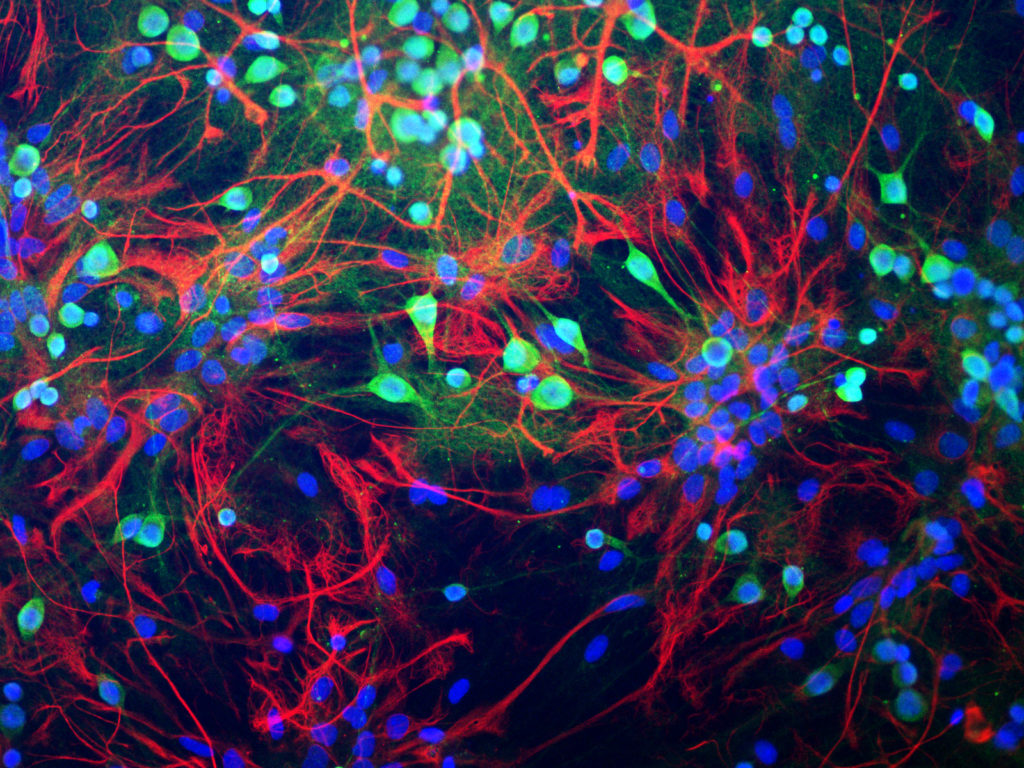Modelling the new neuron-glial paradigm
Modelling of neuron-glial interactions is an emerging field of Computational Neuroscience. The ubiquity of these interactions and the possibility that they may occur within the time and spatial scales that are usually ascribed to neuronal and synaptic function, calls for a revision of current neuron-based modeling paradigms to include potentially relevant effects mediated by glial cells. The modelling arguments discussed by Maurizio de Pittà 1 go in such direction, further hinting a fundamental design of neuronal circuits where their structure and function are possibly intertwined with that of glia, thereby challenging the traditional Neuron Paradigm of the brain, in favor of an extended, more realistic Neuron-Glial one.

Most animals share the ability to move in response to external stimuli, which results from having developed complex neural structures that allow for sophisticated processing of sensory information. From a phylogenetic perspective, as the nervous system changed from a simple net-like structure, such as in jellyfish, to condensed ganglia and centralized brains – starting with flat interstitial worms up to mammals–, a new cell type could be recognized in morphological studies: glial cells.
The importance of this new cell type for a functional brain is arguably reflected by the increase in the relative number of glial cells during evolution: there are roughly equal numbers of glial cells and neurons in mammals whereas, by contrast, glia constitutes only 10% of invertebrate neural cells in Drosophila or C. elegans.
It is currently unknown whether glial cells from different clades share similar functions: the molecular, morphological, and physiological identity of glial cells across and within clades remains a topic of active investigation. In the mammalian brain, the most numerous glial cells appear to fall into two categories: (i) macroglia, which is prominently constituted of oligodendrocytes and astrocytes, and (ii) microglia. Significantly, despite their different developmental origin – macroglia originating from the embryonic ectoderm while microglia coming from the mesoderm –, both cell types share a common feature: they physically blend with neurons in an elaborated branched anatomy, interweaving with neural processes. This feature points to glias as an integral part of both the structure and function of neural networks of the mammalian brain.
Glias as an integral part of neural networks
Oligodendrocytes, for example, are responsible for myelination of axons, which is essential for their trophic support to attain long lengths while allowing for evolved organisms, like mammals and vertebrates in general, to achieve great sizes. On the other hand, as nervous systems increase in complexity, and this complexity correlates with the increasing sophistication of neurological function, a trend in increased complexity is also observed for astrocytes. Finally, microglia, too, can be framed within the evolutionary perspective, in connection with the appearance of compact neural masses and the increased demand thereby of specialized phagocytic and immune functions, including mechanisms of neural protection. It is now emerging that microglia can promote the formation and dismantling of functional neuron-glial networks by axon reorganization during development and by regulation of genesis and pruning of synapses in the mature brain.
Theoretical and computational approaches are beginning to emerge to characterize different aspects of neuron-glial interactions. The new work by de Pittà aims to provide essential knowledge on neuron-glial interactions in the mammalian brain, leveraging on computational studies that focus on structure (anatomy) and function (physiology) of such interactions in the healthy brain.
Although our understanding of the need of neuron-glial interactions in the brain is still at its infancy, being mostly based on predictions that await for experimental validation, simple general modelling arguments borrowed from control theory are introduced to support the importance of including such interactions in traditional neuron-based modelling paradigms.
Author: César Tomé López is a science writer and the editor of Mapping Ignorance
Disclaimer: Parts of this article might have been copied verbatim or almost verbatim from the referenced papers.
References
- De Pittà M. (2020) Neuron-Glial Interactions. In: Jaeger D., Jung R. (eds) Encyclopedia of Computational Neuroscience. Springer, New York, NY. Doi: 10.1007/978-1-4614-7320-6_100691-1 ↩